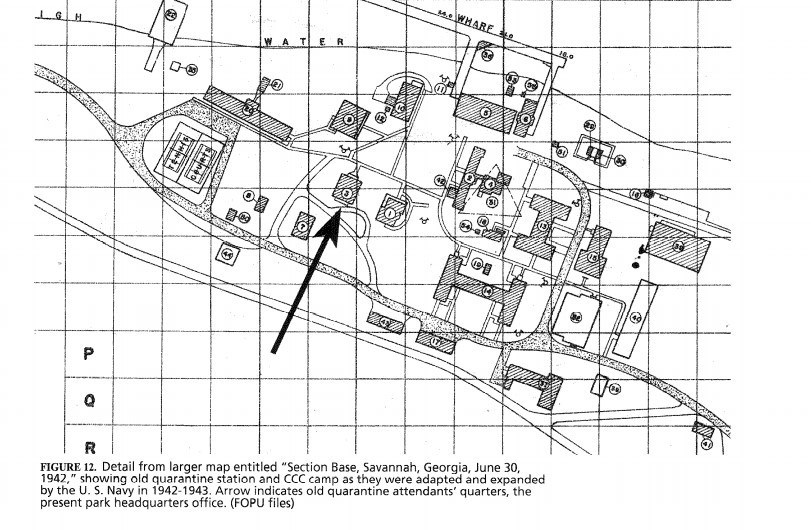Last updated: December 29, 2024
Article
Quarantine Station

NPS Photo
Although historic Fort Pulaski and the Cockspur Island Lighthouse more well-known structures at the park, there is an old white house on the west side of the island that is a significant part of our history. Currently it serves as our Park Headquarters building, but it has served multiple roles throughout the decades since it was built in 1912. Quarantines were used to protect the residents of Savannah from diseases coming by way of ships. Ships anchored offshore for 40 days before they were allowed to come into port. Several quarantine stations served Savannah throughout the years. The first Tybee Island quarantine station was established in 1767 to serve slave ships arriving from Africa. It was accessed via Lazaretto creek, which separates McQueen’s Island from Tybee. Lazaretto is a synonym for quarantine.

NPS Photo
Previous quarantines were established at Oyster Island, Fort Greene, and Fort Jackson. In 1889 the War Department issued a license to the city of Savannah to establish a quarantine station on Cockspur Island. In 1891 the station was open to receive incoming ships from around the world. Several structures were added over the years including a hospital, fumigation building, and quarters for the staff. The Park Headquarters building is the only remaining structure from the original Quarantine Complex. It served as the quarantine keeper’s quarters, replacing an older facility from 1889. Both buildings co-existed, side by side, until 1960 when the older structure was demolished.

Current park headquarters indicated by arrow.
NPS Photo
President Calvin Coolidge designated Fort Pulaski a National Monument in 1924. In 1934, Civilian Conservation Corps Camp 460 came to restore the historic fort and grounds. They set up their camp just east of the Quarantine station. Quarantine operations on Cockspur Island completely ceased in 1937. That same year the War Department transferred ownership of the entire quarantine complex to the Department of the Interior, which runs the National Park Service. On March 18,1942, shortly after America’s entry into World War II, the Department of Interior issued a special use permit to the Department of the Navy. The Navy established Navy Section Base #20 to protect entry into the Port of Savannah. Fort Pulaski National Monument was closed to the public for the duration of WWII. The park did not reopen to the public until August 1, 1947.

NPS Photos
Bibliography: Fort Pulaski Historic Structure Report (2004), Fort Pulaski Administrative History (2003), Fort Pulaski Foundation Document (2016)
